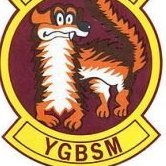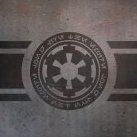
Gabe Pincelli
Members-
Content Count
134 -
Joined
-
Last visited
-
Thank you! I'm not normally a helicopter modeler, but I'm having fun with it.
-
Thanks! There is. They will probably be offered by a small resin company owned by a good friend of mine. Will post an update to let everyone know once it's been confirmed. I hope to have these ready to send to him within a couple weeks. Gabe
-
Figured I'd share my progress on a corrected operator station for the SH-60F. It's not perfect, but the best I could figure out with my limited references. It should look the part once the fuselage is closed up though. Still haven't decided yet whether to attempt scratch building the dipping sonar. They flew plenty without it, so it's not absolutely required. Gabe
-
Kursad, I'd also like to suggest a sheet covering "Humped two seaters" for use with the Phase Hangar OA-4M & TA-4KU conversions I recently made. I also have an OA-4AR conversion in the works. These would include: USMC OA-4M Argentine OA-4AR Kuwaiti TA-4KU Brazilian AF-1A Gabe
-
The ECM/RWR antennae include parts D17, D18, D19, E12, E19, E31, F21, and F22. As far as I can tell, you shouldn't need any of them for your build. Forgot to mention, you should use the bent refueling probe, part number E7.
-
My understanding is that the bent probe was originally developed to eliminate interference with threat detection sensors installed in the Iron Hand capable Skyhawks. An unintended benefit was that it also reduced fuel ingestion into the intake during inflight refueling. But you are correct that many TA-4s had them retrofitted. Most (but not all) of them in adversary service eventually had them fitted. Most with VT squadrons retained the straight probe with a few exceptions. The only way I know how to tell for sure if your modeling subject had a bent probe is photo references.
-
Steve, That Jet at that time was pretty much externally identical to a J. -No guns -No ECM antennas -No chaff/flare fairing -Use Pitot Tube part number F24 on the nose -Do not use the tail-mounted pitot tube -Use part A6 under the aft fuselage -3 pylons -Use part V21 for the upper UHF antenna on the canopy fairing. -This jet had a second UHF antenna mounted on the fuselage underside just aft of the nose gear. Use the additional part V21 after opening the hole in part V11. Later in life, with VF-126, it was replaced with a different st
-
Stevez, In adversary service, there were usually very few visible differences between the J and F. No guns, and most likely a maximum of 3 pylons (if that many) installed. Depending on the history of the specific airframe, it is possible that it could have remnants of ECM antennas and the fairing for the aft Chaff/Flare dispenser installed. Do you know what exact jet, squadron, scheme, and timeframe you are modeling? I may be able to locate an image or two that could help clarify some of the details. HTH, Gabe
-
I was with VFC-13 during the timeframe of the photo. The according to the (very crude) drawings used by the corrosion control shop at the time, it was a three-tone scheme and the colors were 36375, 36320, and 36251. I'm trying to track down my copies of the drawings so I can scan and share them. HTH, Gabe
-
The gear door is on the M/N sprue, so you're good to go there.
-
That's correct, except for late wheels. If they release Sprues P/Q as well, we would have the wheels.
-
M/N also has both TID and PTID RIO IPs, side consoles with TARPS and LANTIRN controls, TARPS Pod, NACA gun vent, Sparrow recess filler pieces, and wing glove ECM antenna fairings.
-
J & L are the small clear sprues with the TID and PTID parts on them.
-
Any chance of sprue P/Q being available too?





